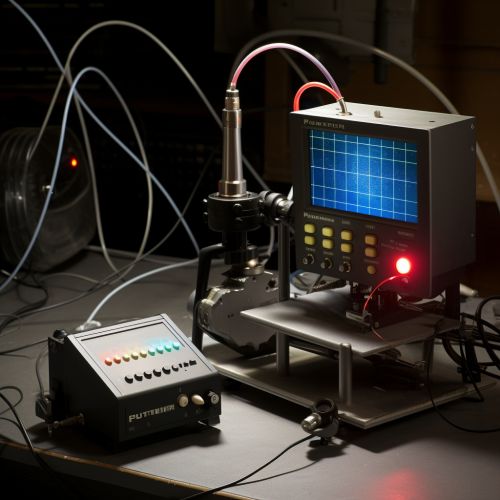Fourier Transform Infrared Spectroscopy
Introduction
Fourier Transform Infrared Spectroscopy (FTIR) is a powerful analytical technique that provides information about the molecular composition and chemical bonding of materials. It is based on the principle that molecules absorb specific frequencies of infrared light that correspond to their unique vibrational modes. The resulting absorption spectrum can be used to identify and quantify the components of a sample.
Principle of Operation
FTIR operates on the principle of Fourier Transform, a mathematical method used to convert a signal into its constituent frequencies. In the context of FTIR, the signal is the infrared light absorbed by the sample. The Fourier Transform of this signal yields an absorption spectrum, which is a plot of the amount of light absorbed (or transmitted) at each frequency.
The absorption of infrared light by a molecule causes it to vibrate at specific frequencies. These vibrational modes are characteristic of the type of chemical bond and the atoms involved in the bond. Therefore, by analyzing the absorption spectrum, it is possible to determine the types of bonds present in the sample and, by extension, its molecular composition.


Sample Preparation
The preparation of a sample for FTIR analysis depends on the nature of the sample. Solid samples can be analyzed directly or mixed with a non-absorbing matrix, such as potassium bromide (KBr), and pressed into a pellet. Liquid samples can be placed between two infrared-transparent windows, while gaseous samples can be contained in a cell with infrared-transparent windows.
Instrumentation
An FTIR spectrometer consists of several key components: a source of infrared light, an interferometer, a sample compartment, a detector, and a computer for data processing.
The source of infrared light is typically a heated ceramic body that emits a broad spectrum of infrared light. The interferometer, which is the heart of the FTIR spectrometer, splits the incoming light into two beams, directs them along different paths, and then recombines them to produce an interference pattern. The sample compartment is where the sample is placed for analysis. The detector measures the intensity of the light after it has passed through the sample. The computer processes the detector signal to produce the absorption spectrum.
Applications
FTIR is used in a wide range of applications, including materials science, forensic science, pharmaceuticals, environmental monitoring, and industrial quality control.
In materials science, FTIR can be used to identify unknown materials, determine the composition of complex mixtures, and study the behavior of materials under different conditions. In forensic science, FTIR can be used to analyze trace evidence, such as paint chips, fibers, and residues. In the pharmaceutical industry, FTIR is used to verify the identity and purity of raw materials and finished products. In environmental monitoring, FTIR can be used to detect and quantify pollutants in air, water, and soil. In industrial quality control, FTIR can be used to monitor the consistency of manufacturing processes and the quality of products.
Advantages and Limitations
One of the main advantages of FTIR is its ability to provide detailed information about the molecular composition and chemical bonding of materials. It is a non-destructive technique, meaning that the sample is not altered or consumed during analysis. FTIR is also a rapid technique, with most measurements taking only a few minutes.
However, FTIR also has some limitations. It is less sensitive than some other spectroscopic techniques, such as mass spectrometry. It is also less effective for analyzing samples that contain low concentrations of the target analyte. Furthermore, the interpretation of FTIR spectra can be complex, particularly for mixtures of different compounds.
